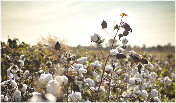From design concept to material selection, every choice made in creating a Ralph Lauren product is considered and intentional. We are reimagining what and how we create — and the stories we tell through our products and campaigns. This includes our work to embed inclusivity and incorporate circular principles into our designs, enabling our most iconic products to live on through generations.
Progress on Our Goals
98% of units produced met at least one of our sustainable material criteria
Piloted a repair initiative, introduced a denim recycling program and expanded Ralph Lauren Vintage offerings
Achieved the goal to introduce five Cradle to Cradle Certified® iconic products
From design concept to material selection, every choice made in creating a Ralph Lauren product is considered and intentional. We are reimagining what and how we create — and the stories we tell through our products and campaigns. This includes our work to embed inclusivity and incorporate circular principles into our designs, enabling our most iconic products to live on through generations.
We are designing products for Integrated Circularity, considering their end of life; connecting consumers to opportunities for resale, repair and recycling; and investing in scalable innovations.
We are committed to sourcing Sustainable Materials certified to credible third-party standards and working toward increasing traceability across our supply chain.
Through our Design with Intent efforts, we ensure the products we create and the stories we tell are authentic expressions of heritage, putting inclusivity at the center of our design process and brand storytelling — and collaborating with the communities that inspire us.
We are building a resilient and responsible Value Chain by enhancing transparency and traceability, strengthening partnerships and working with suppliers to respect human rights and promote environmental sustainability.




